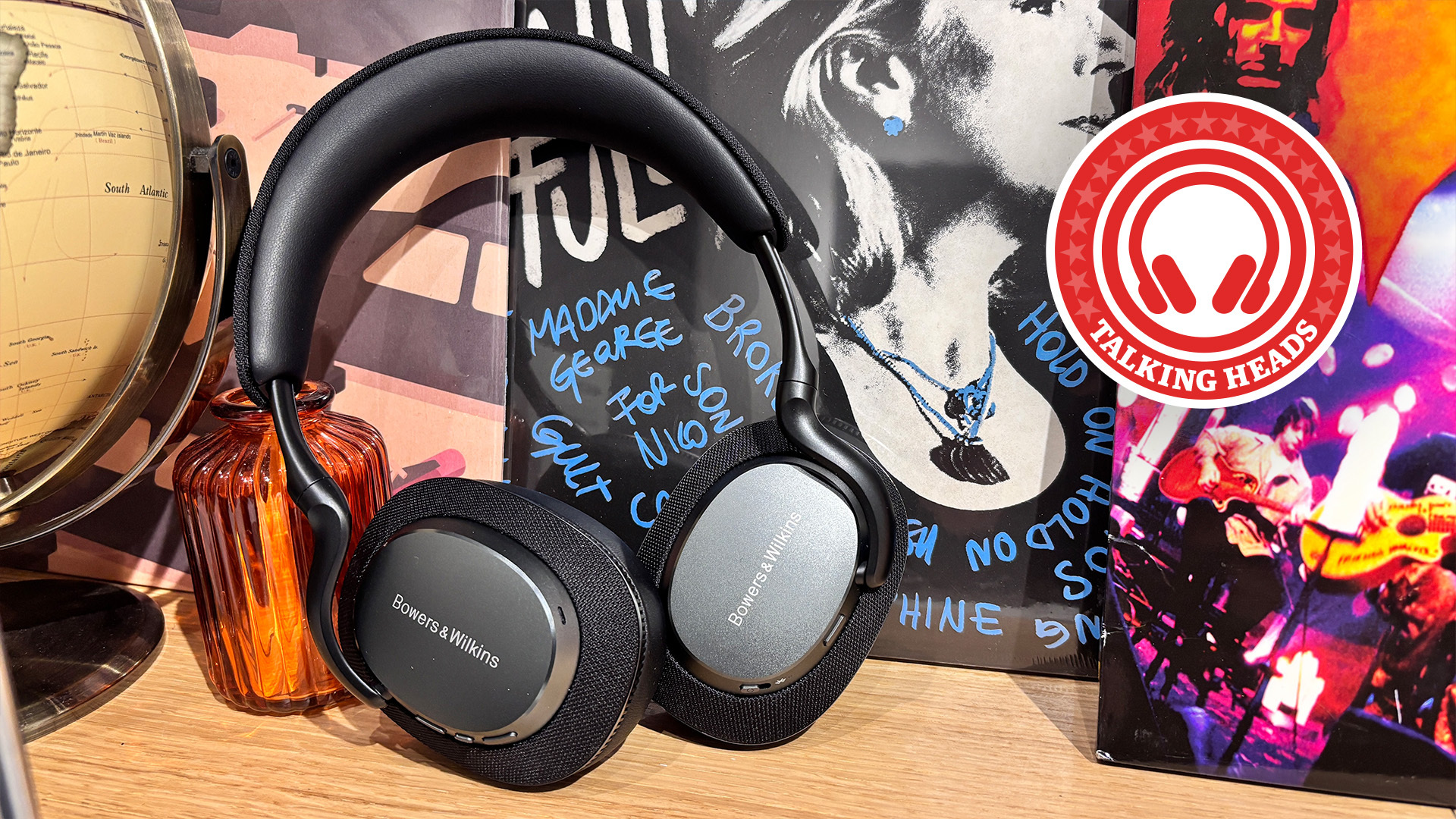LG G3 OLED vs Samsung S95C QD-OLED: should you choose MLA or QD-OLED?
The battle of the brightest OLED TVs
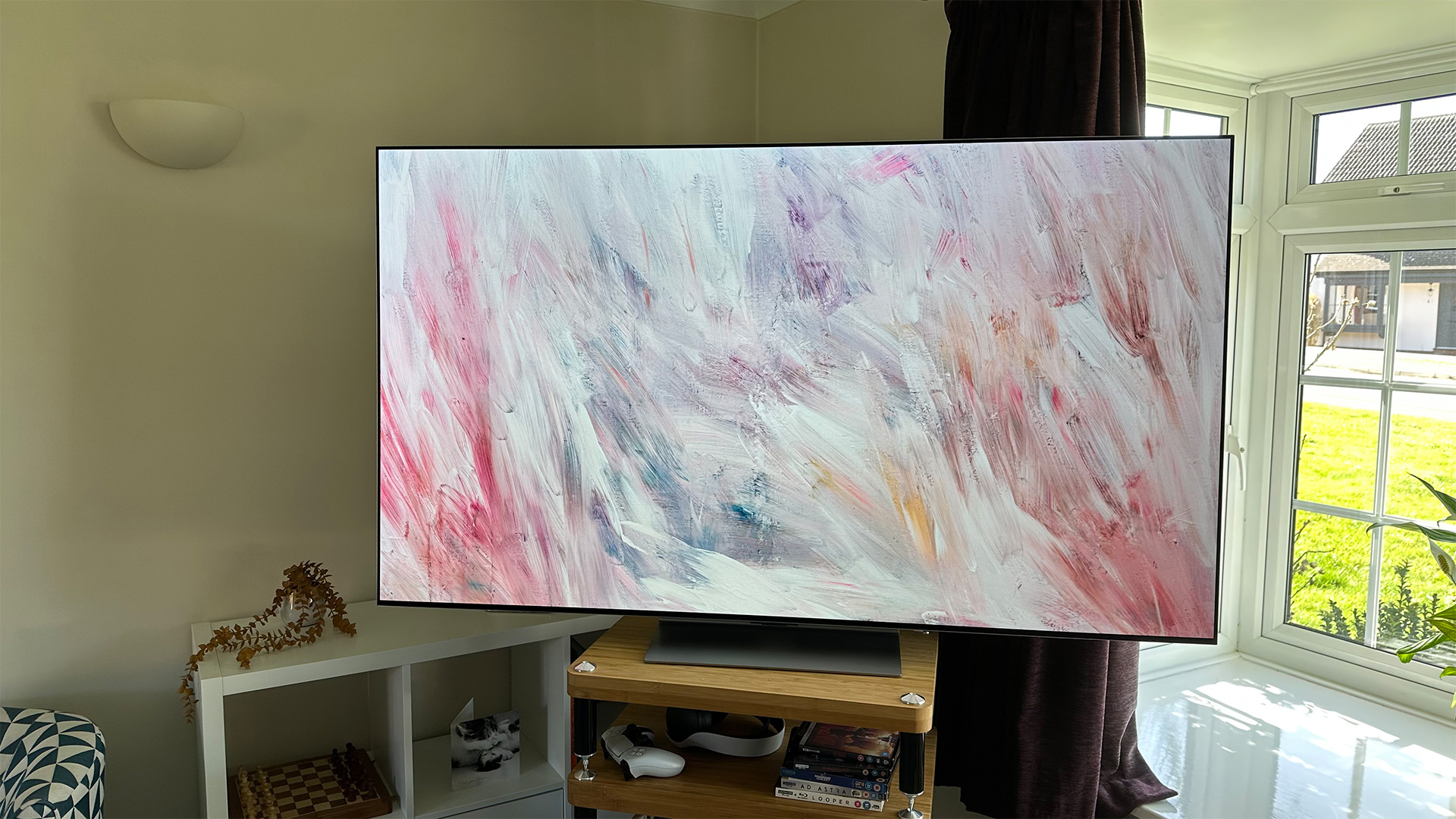
Type MLA OLED
Resolution 4K
HDR formats HLG, HDR10, Dolby Vision
Operating system webOS 23
HDMI inputs x4 (4 x 48Gbps HDMI 2.1)
Gaming features 4K/120, VRR, ALLM, Dolby Vision game mode, HGiG
The world's first MLA OLED is a shining delight, with highlights not only brighter than before but more vibrant, too. This is combined with subtlety and cinematic accuracy to make for a hugely satisfying picture performance. Slightly pale shadows aside, the only real flaw is the dull sound, which won't be a problem if you combine the TV with a soundbar or AVR.
For
- Brilliantly bright and vibrant highlights
- Generally balanced and natural
- Flawless gaming specs
Against
- Pale colours in low light scenes
- Dull sound
- Doesn’t come with a stand
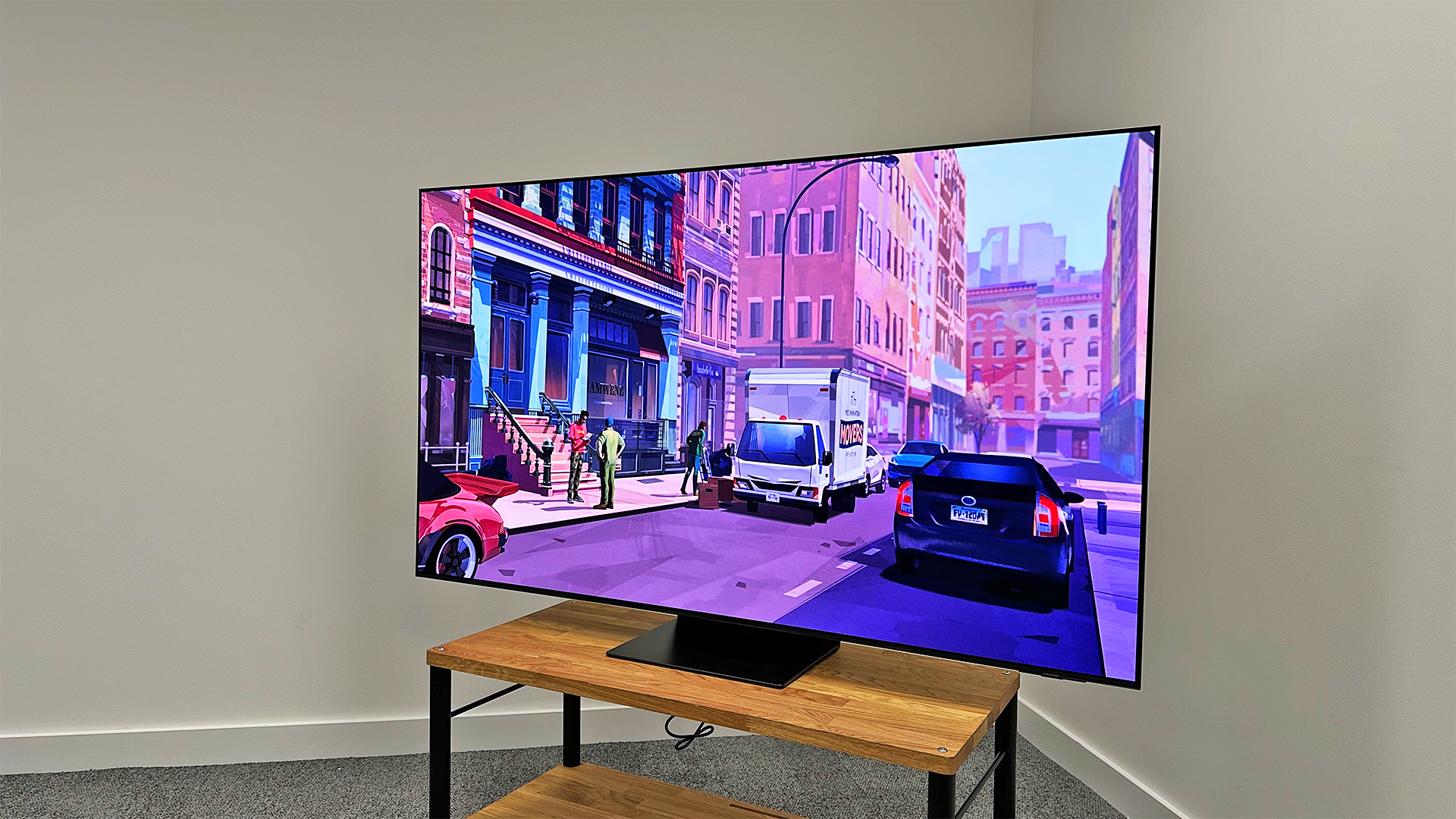
Type QD-OLED
Resolution 4K
HDR formats HLG, HDR10, HDR10+
Operating system Tizen
HDMI inputs x4 (4 x 48Gbps HDMI 2.1)
Gaming features 4K/120, VRR, ALLM, HGiG
Samsung's second-generation QD-OLED TV is one of the most technically capable TVs we've ever tested. Its extraordinary contrast and Quantum Dot-boosted colours result in a picture performance that will knock your socks off. Unfortunately, it can't quite combine this spectacle with subtlety, so there's a slight lack of realism to shading at times. It doesn't sound great, either, but buy a soundbar or AVR and that won't matter.
For
- Incredible contrast
- Bright, vibrant and super-sharp
- Excellent gaming specs
Against
- A slight lack of picture subtlety
- No Dolby Vision
- Below-par sound for the price
2022 was a real shot in the arm for OLED TVs. LG Display produced its brightest-ever OLED panel, resulting in the first 1000+ nit models, such as the LG G2. Meanwhile, the first QD-OLED TVs also appeared and used Quantum Dot technology to hit similar peak brightness figures.
That pales in comparison to the brightness levels that their respective successors are able to hit. On the ‘traditional’ OLED side there’s new Micro Lens Array technology, and on the QD-OLED side are second-generation panels that are vastly more efficient – and therefore capable of going significantly brighter – than those that have gone before. The upshot is new models on both WOLED and QD-OLED sides that are capable of hitting over 2000 nits.
Arguably, the two most significant TVs of the year are the LG G3 and Samsung S95C, both of which we've now subjected to our comprehensive and comparative testing process. You can read our LG G3 review or Samsung S95C review individually, of course, but if you're weighing up which of these super-bright new OLED TVs is for you, read on for our in-depth comparison.
It's worth noting now that both the LG and Samsung models are about to be replaced by new 2024 models. On the LG side, there is the G4, a new Micro Lens Array touting OLED TV, while Samsung is about to launch the QD-OLED equipped S95D.
Both TVs feature fairly comparable upgrades, mostly centred around upgrades to brightness. Gaming upgrades also come in the form of a new 144Hz maximum refresh rate, alongside updates to operating systems.
You can expect full reviews for both TVs soon in which we'll dig a bit deeper into the picture and sound performances, as well as a comparison between each of these upcoming TVs. However, if you're in the market for a TV now and don't mind opting for a TV that doesn't have the latest model number, then there are some excellent deals to be had on these outgoing models.
LG G3 vs Samsung S95C: price
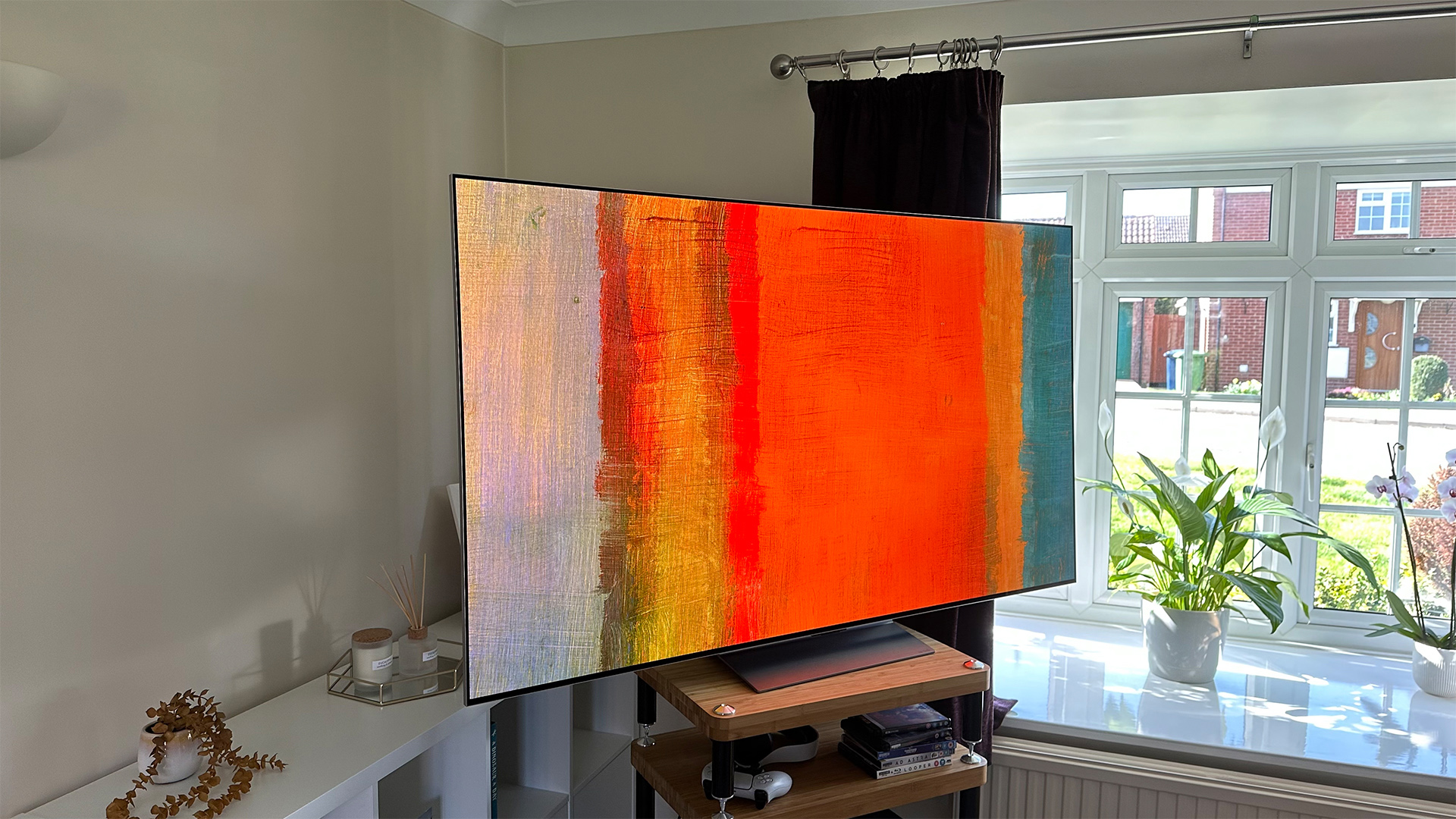
The launch prices of both the LG G3 and Samsung S95C make for interesting reading:
| Size | LG G3 | Samsung S95C |
|---|---|---|
| 55 | £2600 / $2500 / AU$4195 | £2699 / $2500 / AU$3999 |
| 65 | £3500 / $3300 / AU$5295 | £3599 / $3300 / AU$4999 |
| 77 | £5000 / $4500 / AU$8395 | £5099 / $4500 / AU$7999 |
| 83 | £7500 / $6500 / AU$10,995 | No such model |
Now, these are just launch prices and they will change very quickly, but it's worth noting that both models are officially priced higher than their respective predecessors were at launch. The second thing is that the G3 is exactly £99 cheaper than the S95C in the UK, whereas the two sets are identically priced in the US and the S95C is the marginally cheaper model in Australia.
Really, we can consider the two TVs as being priced the same, and this price parity likely isn't a coincidence. LG and Samsung are locked in a seemingly endless war for TV domination, and the pricing of these models appears to be the latest battleground. That's great news for buyers, as we can expect pretty regular discounts as each brand attempts to outdo the other.
You can see the latest, lowest prices for each model below.
** WINNER: Draw **
LG G3 vs Samsung S95C: design
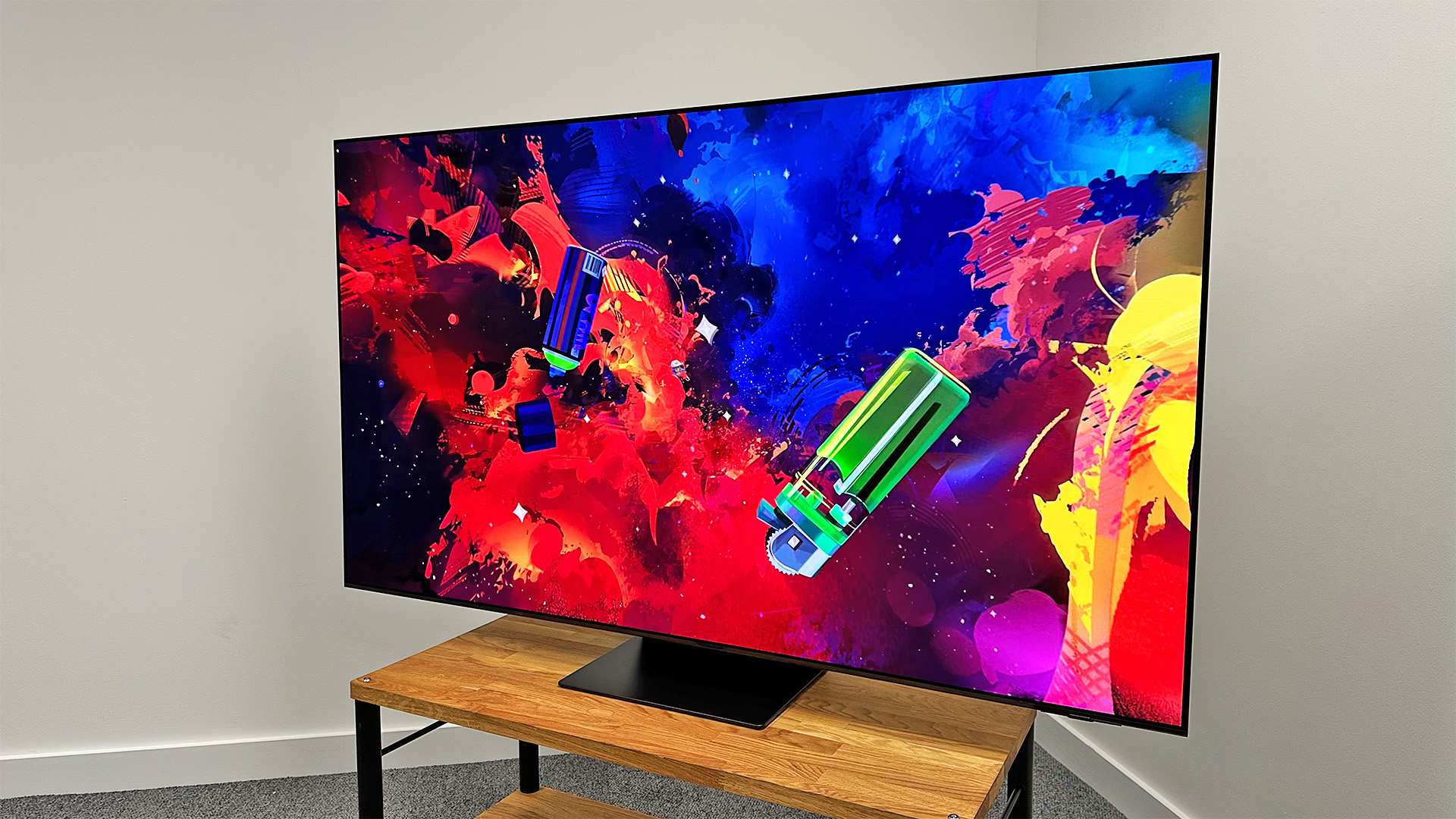
The LG G3 looks very similar to the G2 it replaces. This is a TV that's specifically designed to be wall-mounted, to the extent that there's not even a stand included in the box. Instead, it's bundled with the Zero Gap wall mount, which is (as the name suggests) a wall mount that allows the TV to sit more or less flush against the surface to which it's mounted. There's nothing new here since last year, but the minimalist floating design looks as sharp as ever.
If you don't plan on wall mounting your LG G3, then you can purchase a stand separately – LG produces an official one but that will set you back around £100 / $150 / AU$300. Alternatively, you could buy a more affordable third-party pedestal that attaches to the VESA mounting points.
Elsewhere, the LG G3 features very slim bezels around its 4K OLED panel, continuing the minimalist styling. It is also made of the same Composite Fibre material as last year's model, which makes the TV both light and sturdy and should help make the unboxing and set-up process mostly painless.
The LG G3 OLED comes in four screen sizes; 55, 65, 77 and 83 inches. You'll have to drop down to the LG C3 if you want a 42- or 48-inch model, which also means sacrificing the Multi-Lens Array screen technology – more on that later.
LG is continuing with the same excellent remote as before, complete with motion sensor control capabilities, a microphone for voice operation and shortcut buttons for easy access to streaming services.
Samsung's rival QD-OLED offering also features a modern and minimalist design with slim bezels, but it offers more versatility out of the box than the G3 as it includes a traditional stand.
From the front, the set retains the squared-off design of the S95B, but take a glance at the TV side-on and you'll notice more of a difference. That's because while the S95B has a super-slim panel section and a thicker plastic section for the processing hardware, speakers and connections, Samsung has opted for a uniform thickness (of 1.1cm) for the whole chassis. It's very similar to the approach LG takes with the G-series, right down to the fact that it can be mounted practically flush against the wall. The G3, while very slim in its own right, is comparatively thick at 2.4cm.
The S95C is available in the 55- and 65-inch sizes of the S95B, but there's also a new 77-inch model.
The SolarCell remote has been updated, too, and now features rounded corners and an all-black finish. It still features a microphone for voice controls and shortcut buttons to streaming apps, as well as solar panels and a USB-C port for recharging the non-removable battery.
While both sets are very stylish indeed, the S95C looks fresher and smarter, is thinner, and comes with a pedestal stand. Therefore, it takes this round.
** WINNER: Samsung S95C **
LG G3 vs Samsung S95C: features
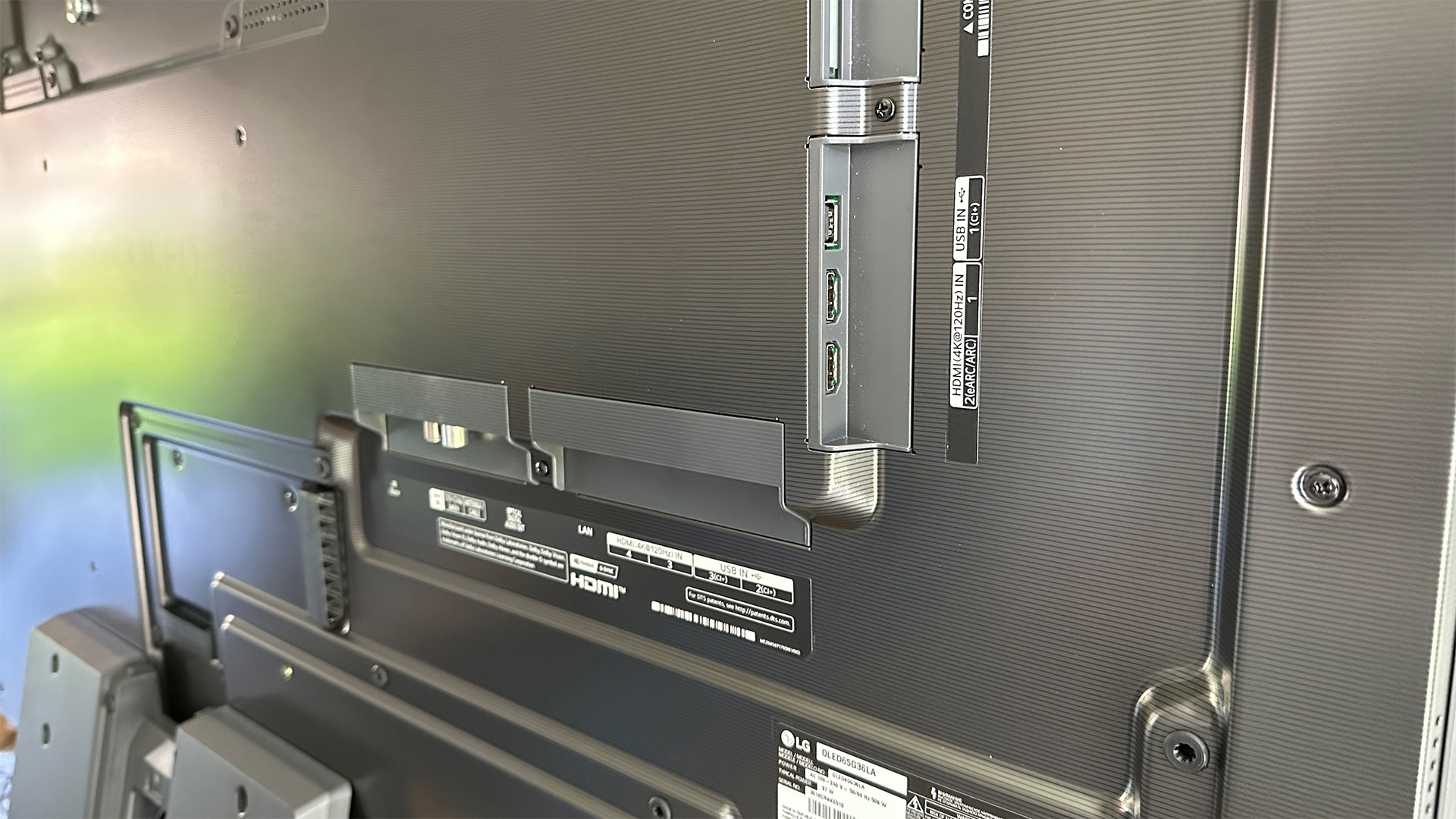
As you'd expect with the latest flagship OLEDs, these TVs are feature-packed. Both support HDR, although as per usual each manufacturer has selected its preferred formats. Both feature HDR10 and HLG, but LG adds Dolby Vision while Samsung opts for HDR10+. Samsung is remaining steadfast in its commitment to ignoring Dolby Vision, which is frustrating as it's comfortably the more dominant of the two 'adaptive' HDR formats across both physical discs and streaming.
Gamers are well catered for by both of these sets, as they each support all of the major features offered by the PS5, Xbox Series X and PC, including 4K/120Hz, VRR and ALLM. What's more, they support these features across all four of their HDMI 2.1 sockets. On top of that, the G3 supports the Dolby Vision gaming offered by the Xbox, while the S95C will support 4K/144Hz if you've got a PC capable of outputting it. Both TVs also offer an HGiG setting for more accurate HDR tone mapping, but this is much better implemented on the LG G3.
On the subject of HDMI ports, you'll find them in two very different locations on each of these TVs. LG has taken the more traditional approach by embedding them into the rear of the TV, but Samsung has instead opted for its One Connect box, which houses all of the connections in an external unit that connects to the TV with just one, impressively thin cable. This helps to achieve the set's aforementioned 1.1cm thickness without sacrificing functionality, as well as keeping the ports themselves easy to access.
LG and Samsung are also offering a host of new software features. LG has debuted a new version of its webOS operating system, focused on cleaning up the user experience via a card system that collates streaming content, settings and switching inputs in an updated layout that's snappier and more intuitive than before.
Samsung, on the other hand, has gone with a mostly unchanged version of its Tizen operating system from its 2022 TV range, which in itself was an overhaul from the 2021 version of the TV operating system. We commended this new version of Tizen in our S95B review on its vast app support, but we weren't enamoured with its cumbersome and sluggish performance. The new version is more responsive and broadly better laid-out, but it could still be more intuitive.
It's also worth noting that both operating systems feature large adverts on their home screens, and this is not something of which we approve.
Both TVs are capable of accessing a plethora of streaming services from their smart operating systems, including Netflix, Disney Plus, Apple TV+, Amazon Prime Video and much more. Gamers should also note that both also offer native game streaming options, with Samsung's partnership with Xbox allowing for Xbox Game Pass streaming via the integrated app. Both TVs also have access to NVIDIA GeForce Now, which offers an expansive list of PC gaming titles for you to stream natively through the TVs, without the need to connect any additional streaming equipment.
Finally, you'll find Dolby Atmos support on both of these TVs. Hooking up a decent Dolby Atmos soundbar or surround speaker system should yield a quality immersive audio experience, although that's not the only feature that should enhance your audio experience with these TVs. Both Samsung and LG have developed systems to combine their respective first-party soundbars and TV speakers for a supposedly fuller and more immersive sound experience. Samsung calls it Q-Symphony and has included it with its previous-generation televisions. LG, on the other hand, is introducing WOW Orchestra as part of its 2023 TV range and accompanying new soundbar range.
Picking a winner here is hard. Both TVs are supremely well-featured, particularly for gamers, and while we're tempted to give the round to Samsung for its One Connect system, its lack of Dolby Vision is a bit of an issue. We're calling this a draw.
** WINNER: Draw **
LG G3 vs Samsung S95C: picture
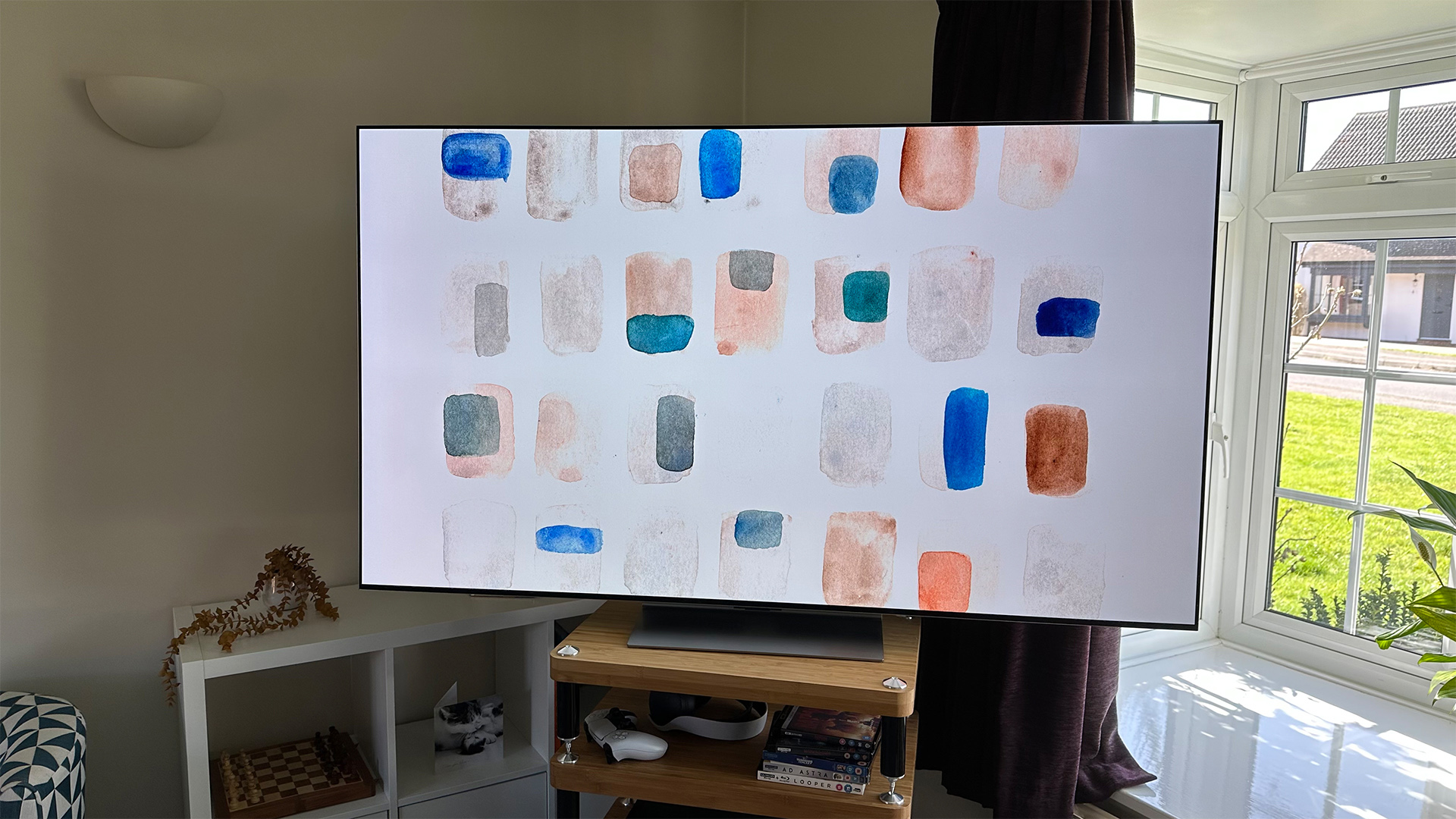
This is where it gets interesting, as the two TVs feature state-of-the-art OLED panels that pack some serious upgrades over prior iterations. Brightness is OLED's greatest weakness, because while OLED panels can create perfect blacks, which makes for awesome contrast, they traditionally can't go as outright bright as the best LCD models.
For example, the LG G2 – one of the brightest pre-2023 OLED TVs – has a peak brightness of around 1000 nits in its most authentic picture modes, and while that's by no means objectively dull, there are plenty of LED-backlit rivals that can easily surpass it.
With the G3 and S95C, LG and Samsung have rectified this, but they've used different technologies to do so.
LG has gone with the latest 'Meta' OLED panel from its sister division LG Display. This incorporates Micro Lens Array (MLA) technology – essentially a layer made up of billions of microscopic lenses (sometimes referred to as lenslets) that focus the existing light emitting from the OLED materials, resulting in a far brighter final image.
LG claims that the G3 can hit a peak brightness figure of 2040 nits in its Vivid HDR setting. In its more authentic Cinema HDR mode – the one in which the G2 recorded a figure of around 1000 nits – the G3 will hit almost 1500 nits. In other words, we're talking about a roughly 50 per cent increase in real-world peak brightness.
Having now reviewed the LG G3, we can confirm that the brightness increase is obvious. Highlights are significantly brighter than they were from the G2, popping from the screen in beautiful fashion. What's more, while some predicted that MLA-boosted OLEDs would be quite pale in the brightest parts of the picture (thanks to their use of a white sub-pixel), bright colours are actually markedly more vivid and full-bodied than they were from last year's G2.
Combined with OLED's trademark inky blacks and pixel-level contrast control, these increases to outright brightness and bright colour vibrancy result in a fabulously dynamic picture overall.
In fact, picture-wise, the LG G3 is an all-round stunner, but with one exception: colours in low-light areas are a bit pale. That's not a huge deal, but it wasn't the case with the G2, so we're a bit surprised by the change.
Onto the Samsung S95C, which features QD-OLED, a technology that the company debuted with last year's S95B and that was also seen on Sony's A95K. QD-OLED involves a layer of red and green quantum dots that are placed over a panel of blue OLED pixels. Unlike the standard OLED technology produced by LG Display, there's no white sub-pixel involved in QD-OLED, so brightness can be boosted without there being a loss in colour vibrancy (though, as noted, we found the G3 to be far from lacking in bright colour vibrancy in our extensive test).
QD-OLED offers the same deep inky blacks we know and love from OLED, but it adds extra punch to colours, as well as upping the brightness significantly. In fact, the second-generation QD-OLED panel that Samsung is using in the S95C is, like the G3, able to reach a brightness level north of 2000 nits. Again, that's only achievable when the set is in its most vivid and least authentic picture mode – in its more cinematic presets it can hit over 1300 nits.
That number might be lower than the G3's, but with real world content there's little to choose between the two in terms of peak brightness. The S95C is certainly the more vibrant of the two TVs in colours, though, and while the G3 is by no means pale in the brightest parts of the picture, the S95C has even more impressive colour saturation.
The problem for the S95C is that is that while it's undeniably spectacular, it's not quite as subtle as it could be, with a slightly aggressive approach to contrast and colours being just a little bit jarring at times. You can avoid this by switching to the Filmmaker Mode, which turns off all of the picture processing, but the resulting image is dull. During our extensive testing, we weren't able to find a way to make the picture both lively and natural. This isn't a problem for the G3, which is both subtle and engaging more or less straight out of the box.
Both TVs are brilliantly sharp and detailed, good handlers of motion, and very accomplished upscalers of sub-4K content so, in the end, it's this slight lack of subtlety on the Samsung side that gives this round to the LG G3.
** WINNER: LG G3 **
LG G3 vs Samsung S95C: sound
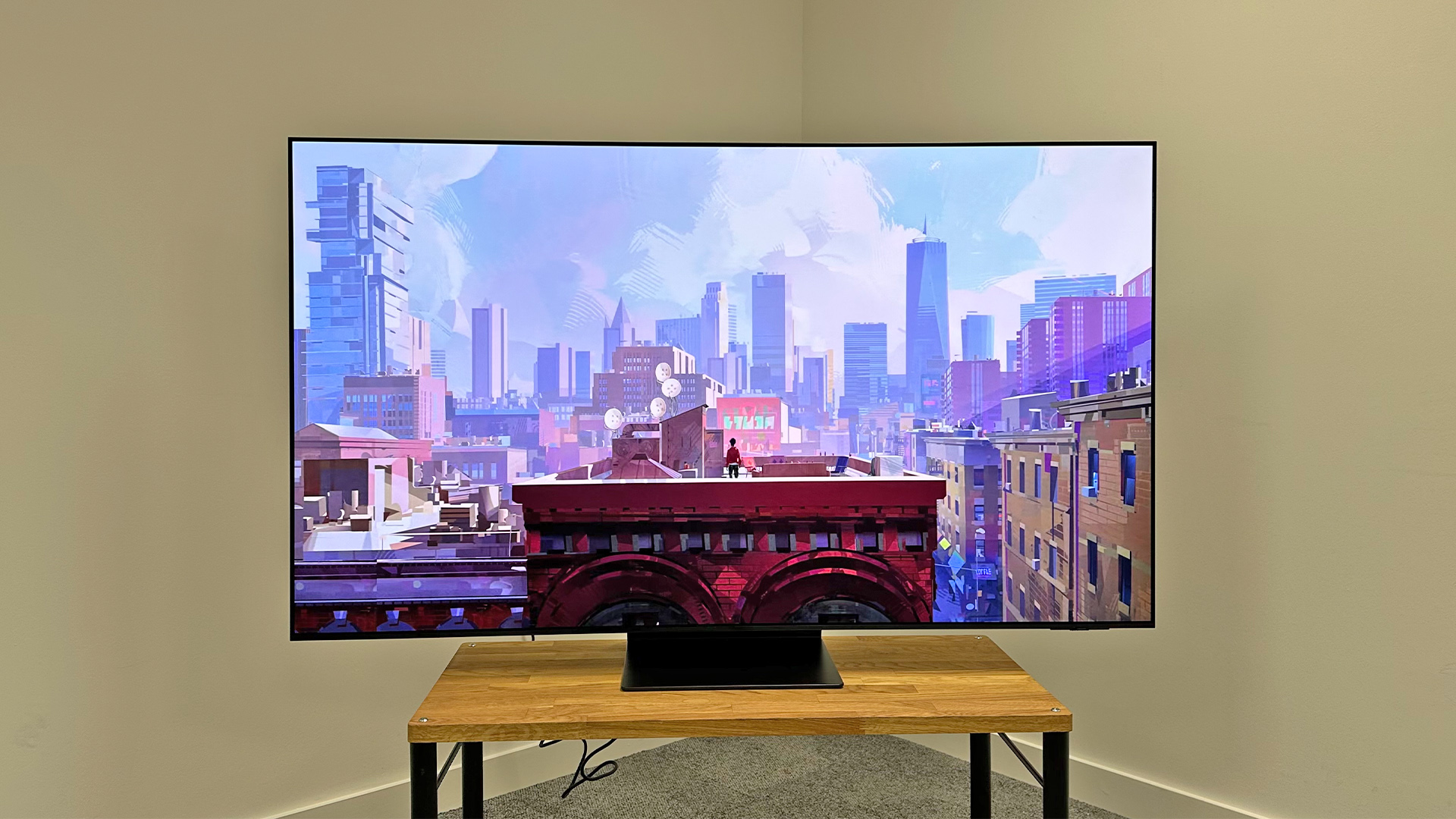
There are very few TVs that sound good, even at the premium end of the spectrum, and neither the LG G3 or the Samsung S95C covers itself in glory here.
The LG G3 is open, spacious and very clean and clear in its delivery, but it's also very dull indeed, with almost no punch to effects. You can add some vim and vigour to proceedings by enabling the AI Sound Pro feature, which is much more upfront and attacking in its delivery. Unfortunately, it’s also bright, thin, and peculiarly clipped so that there's no real body behind sound effects. The Dolby Atmos mode, meanwhile, adds three-dimensionality to the presentation but doesn't make it punchier and it also adds an unpleasant amount of distortion to deep bass.
The Samsung S95C, on the other hand, is comparatively punchy and dynamic, and therefore more engaging. It's relatively spacious, too, although the G3 is marginally better in that regard. However, the Samsung is also lacking bass weight and depth, and there's a little harshness in the upper midrange that makes certain effects stand out more than they should.
Ultimately, this round is a draw, but if you buy one of these TVs and don't combine it with a dedicated sound system, you're robbing yourself of a proper home cinema experience.
** WINNER: Draw **
LG G3 vs Samsung S95C: early verdict
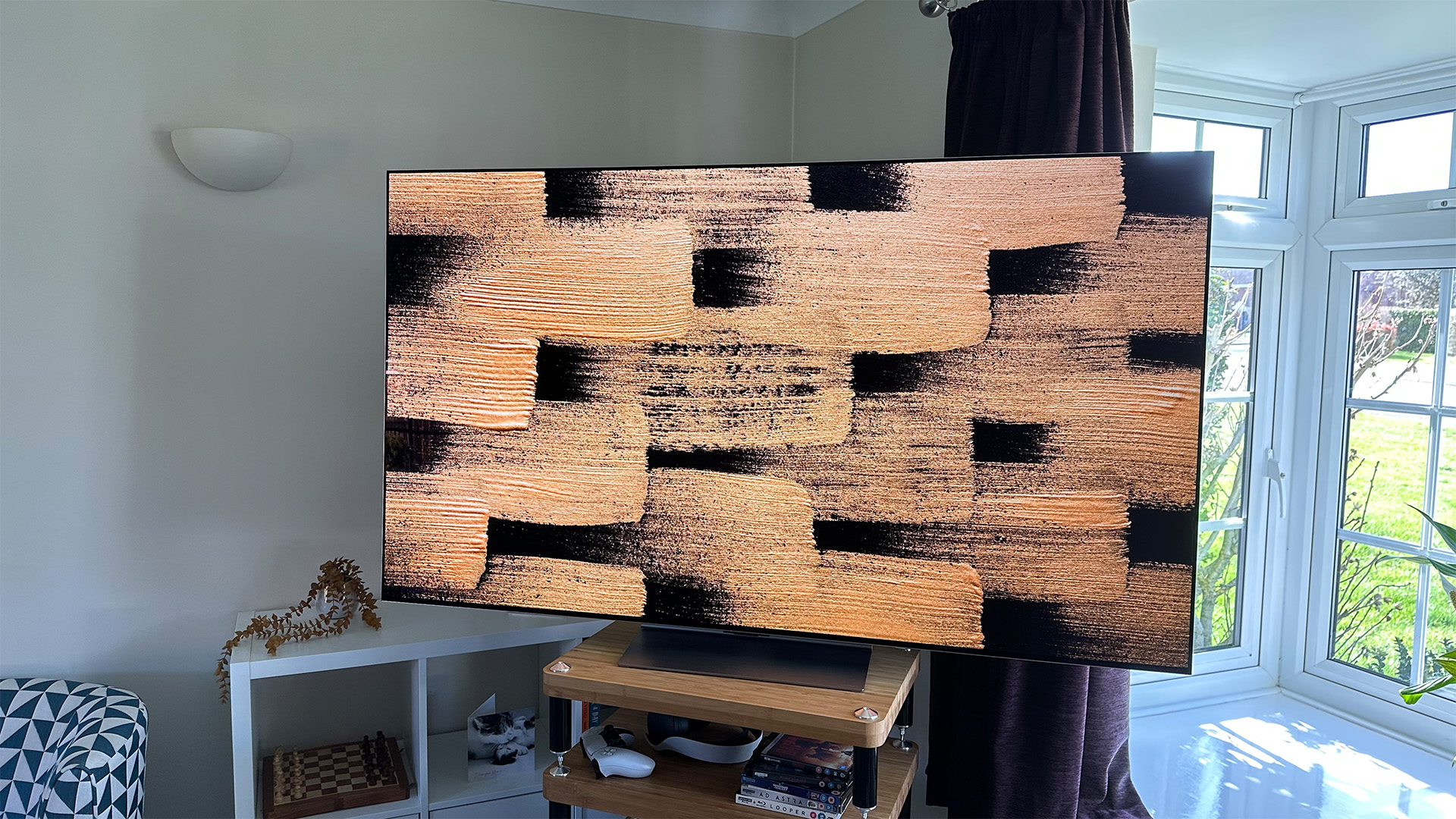
2023 might just be the biggest year for OLED TVs yet, as the two biggest players in the TV game are going head-to-head with brand-new OLED upgrades. These are both vastly brighter than the OLEDs that have gone before them, and the way each one is achieving that brightness is markedly different to the other.
So which is better, MLA or QD-OLED? Honestly, both are brilliant, and we wouldn't want to get into the debate over which technology is better, at least not until we've tested more examples of each.
But in terms of which of these specific TVs is better, we do have a favourite. The S95C is truly spectacular, particularly in terms of colours, but it doesn't quite have the subtlety we would like to see from a TV at this level.
The G3, on the other hand, is beautifully balanced, and you need to do almost nothing in terms of the settings to make it so.
Therefore, the LG G3 is the winner of this shootout, though the Samsung S95C is a worthy alternative. Whichever one you go for, please also budget for a soundbar or home cinema system.
** OVERALL WINNER: LG G3 **
MORE:
Read our LG G3 review
And our Samsung S95C review
Check out our list of the best TVs
Find the best TV deals
Get the What Hi-Fi? Newsletter
The latest hi-fi, home cinema and tech news, reviews, buying advice and deals, direct to your inbox.
Lewis Empson is a Senior Staff Writer on What Hi-Fi?. He was previously Gaming and Digital editor for Cardiff University's 'Quench Magazine', Lewis graduated in 2021 and has since worked on a selection of lifestyle magazines and regional newspapers. Outside of work, he enjoys gaming, gigs and regular cinema trips.
